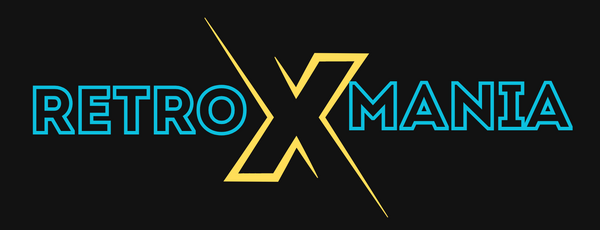Emulators have become essential tools for retro gaming and classic video game enthusiasts. However, achieving optimal performance can sometimes be challenging. In this article, we'll explore how to adjust your emulator settings to fully enjoy your favorite games on PC.
Why is emulator optimization important?

Emulator optimization is crucial for several reasons, both in terms of performance and user experience. When an emulator is not properly configured, it can cause lag, sound lag, and poor graphics quality, which spoils the gaming experience. By optimizing the settings, you can not only improve the fluidity of games but also reduce the load on your hardware, which extends the lifespan of your PC and prevents overheating.
Smooth user experience
Retro games are often designed to run at a specific frame rate, and a poorly configured emulator can introduce stuttering or lag, disrupting the natural flow of the game. Proper optimization ensures that every movement, sound, and image displays as intended, without interruptions or lag.
Preserving the authenticity of the games
One of the main reasons people turn to emulators is to relive the authentic experience of retro gaming. However, without proper optimization, games can lose their authenticity, with graphical glitches or slowdowns that didn't exist on the original consoles. Optimizing settings helps preserve the essence of the games, providing an experience as close to the original as possible.
Material efficiency
Emulators can be resource-intensive, putting a lot of strain on your PC's CPU and GPU. By optimizing your settings, you can reduce this load, preventing overheating and extending the lifespan of your hardware. This also allows your PC to run more efficiently, even when running demanding games.
Compatibility with various games
Every game has different requirements, and some may require specific adjustments to run properly on an emulator. By regularly optimizing your settings, you ensure that your emulator is able to handle a wide variety of games without requiring constant readjustments. This streamlines the gaming experience, allowing you to spend more time playing and less time configuring.
Choosing the Right Emulator for Your PC Setup
Understanding Your PC's Hardware Requirements
Key Component Analysis: To choose the right emulator, start by evaluating your PC's core components: processor, graphics card, RAM, and operating system. Some emulators require more power than others, especially for 3D games or newer consoles like the PlayStation 2 or Nintendo 3DS. A PC with a powerful multi-core processor and a dedicated graphics card will be better able to handle demanding emulators.
Recommendations by console type:
- 8/16-bit consoles (NES, SNES, Mega Drive) : A basic PC with a dual-core processor and integrated graphics is sufficient. Use emulators like Snes9x or Higan.
- 32/64-bit consoles (PlayStation, Nintendo 64) : A quad-core processor and a basic graphics card are sufficient. Opt for emulators such as ePSXe for PlayStation or Project64 for N64.
- Recent consoles (PS2, GameCube, 3DS) : A powerful multi-core processor and a powerful graphics card are recommended. Emulators like PCSX2 for PS2, Dolphin for GameCube/Wii, or Citra for 3DS are suitable.
Operating System Compatibility
Some emulators are better optimized for certain operating systems. For example, PCSX2 works best on Windows, while OpenEmu is a great option for Mac users. For Linux users, emulators like RetroArch offer great flexibility.
Specific performance and features
Advanced Features:
- Controller Support : Some emulators support external controllers better than others. For example, Dolphin allows for extensive controller customization.
- Advanced graphics settings : Choose an emulator that offers graphics customization options, such as resolution enhancement, filters, and shaders for better visual quality.
- Stability : Some emulators are more stable than others, especially for demanding games. Look for user reviews to identify the most reliable ones.
Performance Tests: Before committing to an emulator, run tests with several games to check its fluidity, control responsiveness, and graphics quality. This will allow you to adjust settings or choose another emulator that better suits your setup.
The essential parameters to adjust
Video configuration
Optimizing video settings is often the key to smooth graphics. Here are some tips:
- Internal Resolution : Adjust the emulator's internal resolution to match your screen resolution. A higher resolution provides better image quality, but requires more power.
- Graphics Filters : Use graphics filters to smooth pixels and enhance textures without affecting performance too much.
- Vertical Sync (V-Sync) : Enable V-Sync to prevent screen tearing, but disable it if it causes slowdowns.
Audio configuration
Audio settings also play a crucial role:
- Audio Latency : Reduce latency to avoid audio lag, but don't go too low to avoid audio dropouts.
- Audio Quality : Choose an audio quality that doesn't overload your CPU, especially if you're playing demanding games.
Emulator-specific settings
Each emulator offers unique advanced settings. For example:
- Citra (3DS) : Enable the "Hardware Renderer" to use your GPU and improve performance.
- PCSX2 (PlayStation 2) : Experiment with "Speedhacks" to increase game speeds, but be careful, as this can also introduce bugs.
Additional tips to improve performance
Update drivers
Make sure all your drivers are up to date, especially those for your graphics card. Outdated drivers can cause incompatibilities and performance issues.
Use a performance manager
Performance managers like "Razer Cortex" or "MSI Afterburner" can free up background resources and allocate more power to the emulator.
Prioritize the emulator in task manager
On Windows, you can increase the emulator's priority in Task Manager to get more CPU resources.
Conclusion
Optimizing your emulator settings is essential for a smooth and enjoyable retro gaming experience. By adjusting video and audio settings, and choosing the right emulators for your setup, you can transform your PC into a true retro gaming machine. Remember to keep your system up to date and experiment with different settings to find what works best for you.
By following these tips, you'll be ready to fully enjoy your favorite retro games, just as if you were playing them on the original consoles.



